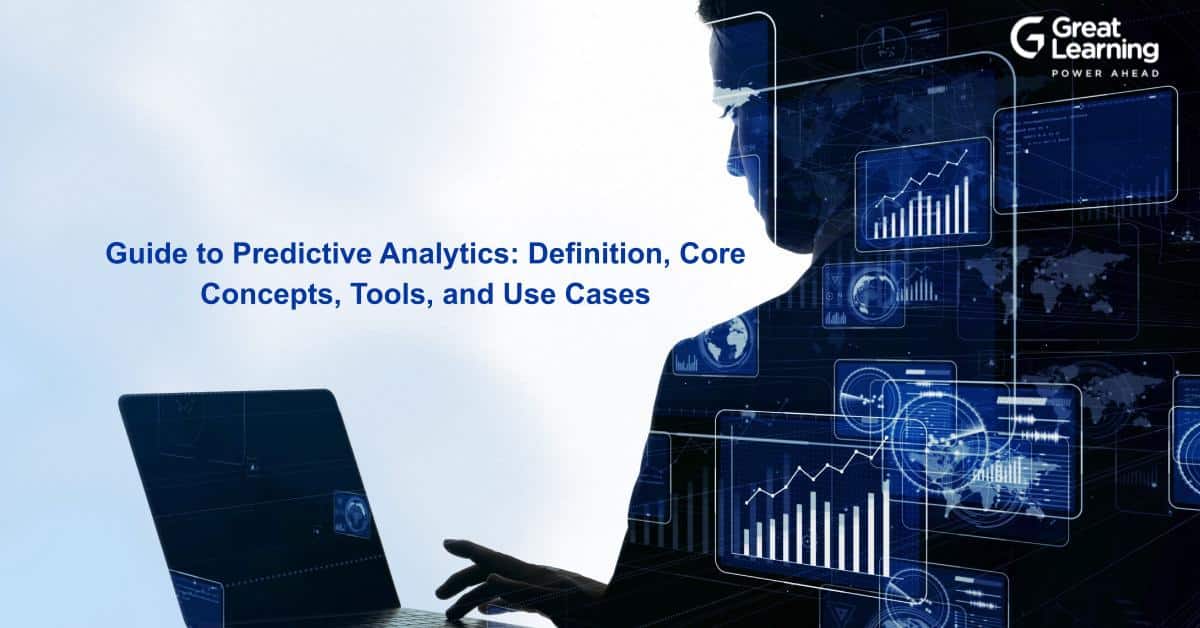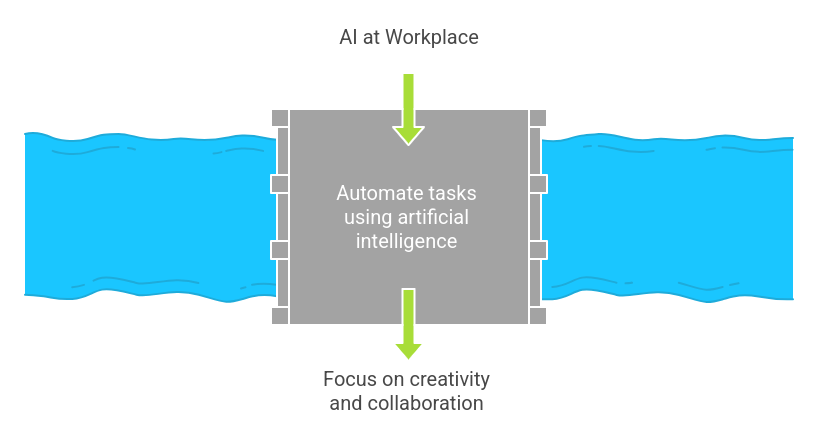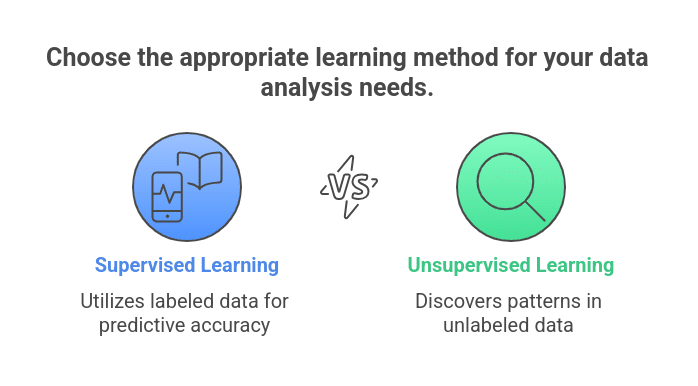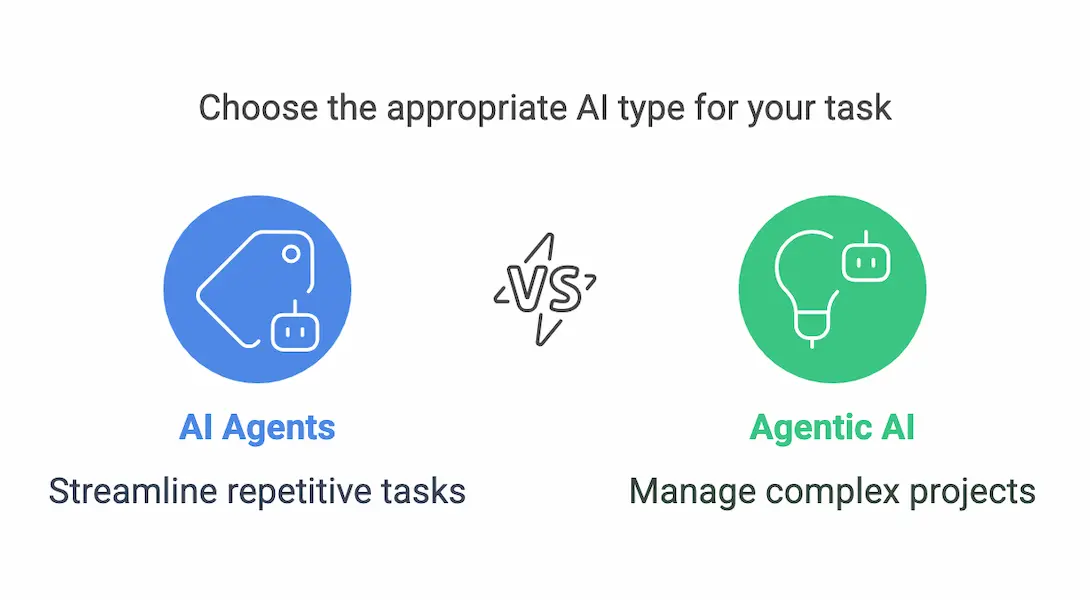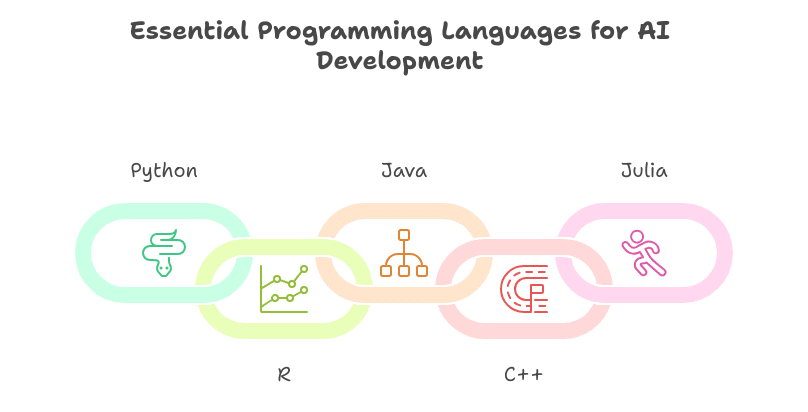- What is Predictive Analytics?
- Types of Predictive Analytical Models
- Widely Used Predictive Analytics Tools
- Predictive Analytics Industry Use Cases
- How Can Businesses Benefit From Predictive Analytics?
- Real-Life Examples of Companies Using Analytics
- How to Start Your Career as a Predictive Analytics Professional?
- Wrapping Up
- FAQs
Predictive analytics has become a crucial component of modern business strategy, enabling organizations to make data-driven decisions and stay ahead of the competition.
With the global predictive analytics market poised to surge from $18.02 billion in 2024 to a staggering $95.30 billion by 2032, it’s no wonder that companies across industries are highly embracing its potential.
This guide will delve into predictive analytics’s definition and core concepts, explore the various tools and techniques used in this field, and examine real-world use cases that demonstrate its practical applications in multiple industries.
What is Predictive Analytics?
Predictive analytics is a type of advanced analytics that uses various statistical models, machine learning algorithms, and data mining techniques to forecast future outcomes and behaviors.
By scrutinizing historical data, it identifies intricate patterns and correlations, facilitating precise predictions across sectors like marketing, finance, risk management, supply chain, and healthcare.
This analytical approach helps make critical decisions, from anticipating customer actions and optimizing investments to improving healthcare strategies.
Predictive analytics empowers organizations to proactively manage risks, capitalize on opportunities, and enhance overall performance.
Types of Predictive Analytical Models
1. Regression Analysis
Regression analysis is a statistical method to establish a relationship between a dependent variable and one or more independent variables. This technique is commonly used to:
- Identify the relationship between variables
- Predict continuous outcomes
- Analyze the impact of independent variables on the dependent variable
Example
A company wants to predict the sale of a new product based on factors such as price, advertising, and competition. Regression analysis can be used to identify the relationship between these variables and forecast future sales.
2. Decision Trees
Decision trees are supervised learning algorithms that use a tree-like model to classify data. This technique is commonly used to:
- Identify patterns in data
- Classify data into different categories
- Handle missing values
Example
A bank wants to classify customers as high or low-risk based on their credit history and financial data. Decision trees can be used to create a model that identifies the most important features for predicting credit risk.
3. Neural Networks
Neural networks are machine learning algorithms inspired by the structure and function of the human brain. This technique is commonly used to:
- Identify complex patterns in data
- Make predictions or classify data
- Handle large datasets
Example
A company wants to predict customer churn based on their behavior and characteristics. Neural networks can be trained on historical data to identify the most important factors for predicting churn.
4. Time Series Analysis
Time series analysis is a forecasting technique used to analyze and predict future values based on past data. This technique is commonly used to:
- Forecast continuous outcomes
- Analyze trends and seasonality
- Identify patterns in time-based data
Example
An organization who needs to predict future stock prices based on historical ones. Time series analysis can identify trends and patterns in the data and make accurate predictions.
5. Clustering
Clustering is an unsupervised learning algorithm that groups similar data points based on their characteristics. This technique is commonly used to:
- Identify patterns in data
- Group similar customers or products together
- Segment markets
Example
A retailer wants to segment customers based on their purchasing behavior. Clustering can be used to identify distinct customer segments and target marketing efforts accordingly.
6. Collaborative Filtering
Collaborative filtering is a type of recommendation system that uses the behavior of similar users or items to make predictions. This technique is commonly used in:
- Personalized recommendations
- Product recommendations
- Content recommendation
Example
An online retailer wants to recommend products to customers based on their past purchases and ratings. Collaborative filtering can be used to identify similar customers and recommend products that they are likely to like.
7. Gradient Boosting
Gradient boosting is a machine learning algorithm combining multiple weak models to create a robust predictive model. This technique is commonly used for:
- Regression tasks
- Classification tasks
- Handling imbalanced datasets
Example
To predict credit risk, a financial institution can leverage gradient boosting to integrate multiple models that analyze distinct factors, such as credit reports, payment history, and income.
8. Random Forest
Random forest is an ensemble learning algorithm that combines multiple decision trees to make predictions. This technique is commonly used for:
- Classification tasks
- Regression tasks
- Handling high-dimensional data
Example
A company wants to classify customers as high or low-risk based on their credit history and financial data. Random forest can be used to combine multiple decision trees that focus on different aspects of credit risk.
9. Naive Bayes
Naive Bayes is a type of probabilistic classifier that assumes independence between features. This technique is commonly used for:
- Classification tasks
- Handling categorical data
- Simplifying complex models
Example
To categorize emails as spam or legitimate, a company can leverage Naive Bayes to develop a model that accurately predicts whether an email is spam or not based on its keywords and sender information.
10. K-Means Clustering
K-means clustering is an unsupervised learning algorithm that groups similar data points based on their characteristics. This technique is commonly used for:
- Identifying patterns in data
- Grouping similar customers or products together
- Segmenting markets
Example
A retailer wants to categorize products based on their characteristics, such as price, brand, and features. K-means clustering can identify distinct product categories and optimize pricing strategies accordingly.
With a 35% projected growth rate, the predictive analytics domain is hotter than ever.
Don’t wait any longer to pursue a rewarding career in this thriving field.
Widely Used Predictive Analytics Tools
1. IBM SPSS
IBM SPSS is powerful statistical software widely used for predictive analytics, data mining, and decision support. It offers robust analytical capabilities and an easy-to-use graphical interface.
2. Alteryx
Alteryx simplifies data preparation, blending, and analysis with its intuitive drag-and-drop interface, empowering users to create predictive models without deep coding expertise.
3. RapidMiner
RapidMiner is an open-source data science platform that accelerates the process of building and deploying predictive models with its visual workflow designer and extensive library of machine learning algorithms.
4. SAS Advanced Analytics
SAS Advanced Analytics provides comprehensive tools for predictive modeling, data mining, and machine learning, enabling businesses to uncover insights and make data-driven decisions.
5. H2O.ai
H2O.ai is an open-source machine learning platform that offers scalable and fast algorithms for building predictive models. It supports both data scientists and business users in making informed decisions.
6. Microsoft Azure Machine Learning
Microsoft Azure Machine Learning provides a cloud-based environment for building, training, and deploying machine learning models. It integrates seamlessly with other Azure services, offering scalable solutions that can adapt to your business needs.
7. Tableau
Tableau is a leading data visualization tool that transforms raw data into interactive and shareable dashboards. Through visual analytics, it helps users gain insights and drive business decisions.
8. KNIME
KNIME is an open-source platform for data analytics, reporting, and integration. It provides a user-friendly interface and a wide range of tools for data preprocessing, analysis, and modeling, making it a comfortable choice for users.
These tools allow businesses to harness the power of predictive analytics, enabling them to make data-driven decisions, improve operational efficiency, and gain a competitive edge in their respective industries.
With a 35% projected growth rate, the predictive and data analytics domain is hotter than ever.
Don’t wait any longer to pursue a rewarding career in this thriving field.
Predictive Analytics Industry Use Cases
1. Marketing
Predictive analytics helps marketing professionals analyze consumer behavior, identify trends, and forecast the effectiveness of marketing campaigns.
By examining historical data and current market conditions, marketers can predict which products or services will be in demand and tailor their strategies accordingly.
2. Stock Trading
Active traders use predictive analytics to forecast stock prices and make informed investment decisions.
By analyzing historical metrics such as moving averages and breakpoints, traders can predict future price movements and adjust their portfolios accordingly.
3. Manufacturing
Manufacturers use predictive analytics to optimize production planning, inventory management, and supply chain logistics.
By analyzing production data, machine failure rates, and other factors, manufacturers can predict equipment failures and schedule maintenance downtime to minimize disruptions and continue their operations flawlessly.
4. Transportation
Transportation companies use predictive analytics to optimize route planning, predict traffic patterns, and reduce delays.
They can predict traffic congestion by analyzing traffic data, weather patterns, and other factors and adjusting their routes accordingly.
5. Cybersecurity
Cybersecurity teams use predictive analytics to detect cyber threats, predict attack patterns, and optimize security measures.
By analyzing network traffic patterns, user behavior, and other factors, cybersecurity teams can predict potential attacks and deploy targeted defenses to mitigate the risk of a breach.
6. Real Estate
Real estate companies use predictive analytics to forecast property values, predict rental yields, and identify investment opportunities.
By analyzing market trends, demographics, and other factors, real estate companies can predict the future value of properties and make informed investment decisions.
7. Human Resources
In HR, predictive analytics improves employee retention, talent acquisition, and career development.
By analyzing employee data, HR professionals can identify trends and patterns that indicate high staff turnover rates or skills gaps and develop targeted strategies to address these issues.
With a 35% projected growth rate, the predictive and data analytics domain is hotter than ever.
Don’t wait any longer to pursue a rewarding career in this thriving field.
How Can Businesses Benefit From Predictive Analytics?
Businesses across diverse industries can leverage predictive analytics in multifaceted ways to drive innovation, efficiency, and strategic decision-making:
1. Market Forecasting and Trend Analysis
Predictive analytics empowers businesses to analyze market trends, consumer behavior, and economic indicators to forecast future demand, identify emerging trends, and capitalize on opportunities before competitors.
2. Customer Lifetime Value Prediction
By analyzing historical data and customer interactions, businesses can predict the lifetime value of individual customers. This enables targeted marketing campaigns, personalized customer experiences, and prioritization of high-value customer segments.
3. Operational Optimization
From supply chain management to manufacturing processes, predictive analytics optimizes operational efficiency by predicting equipment failures, optimizing inventory levels, and streamlining production schedules based on demand forecasts.
4. Risk Management and Fraud Detection
Predictive models analyze vast datasets in real time to detect anomalies and predict potential risks, whether in financial transactions, cybersecurity threats, or compliance violations. This proactive approach mitigates risks and enhances security measures.
5. Predictive Maintenance
By analyzing sensor data from machinery and equipment, businesses can predict maintenance needs, minimize downtime, and reduce maintenance costs. This predictive approach improves asset reliability and extends equipment lifespan.
By integrating predictive analytics into their operations, businesses gain a competitive edge by making data-driven decisions, optimizing resource allocation, and enhancing customer satisfaction across various sectors and niches.
Real-Life Examples of Companies Using Analytics
Case Study 1: Siemens’ Predictive Maintenance Success
Background
Siemens, a global leader in industrial manufacturing, has integrated predictive analytics into their maintenance strategy to optimize machine performance and reduce operational costs.
Implementation
Siemens employs machine learning algorithms to monitor and analyze real-time data from their manufacturing equipment.
By identifying wear and tear patterns and predicting failures, they can schedule maintenance activities precisely when needed, avoiding unnecessary interruptions and extending equipment life.
Outcomes
- Reduction in Unplanned Downtime: Siemens reported a 20% decrease in unplanned downtime across its manufacturing facilities worldwide, which has significantly enhanced production efficiency.
- Improvement in Equipment Effectiveness: Implementing predictive maintenance has resulted in a 15% increase in Overall Equipment Effectiveness (OEE), leading to improved production processes and reduced operational costs.
- Cost Savings: Siemens documented impressive $25 million annual cost savings in maintenance expenditures. This achievement is directly attributed to their data-driven predictive maintenance approach, which showcases the financial benefits of leveraging predictive analytics.
Case Study 2: John Deere Agricultural Yield Prediction
Background
John Deere, a leader in agricultural machinery, harnesses data science to predict crop yields, empowering farmers with actionable insights for optimized farming practices.
Implementation
By integrating sensor data from farming equipment, weather forecasts, and soil conditions, John Deere’s predictive models accurately forecast crop yields.
This data-driven approach guides farmers in making informed decisions on planting times, irrigation schedules, and crop management strategies.
Outcomes
- Increased Crop Yields: Farmers using John Deere’s predictive analytics report an average 15% increase in crop yields compared to traditional methods, enhancing farm productivity and profitability.
- Resource Conservation: Optimization of planting and harvesting schedules based on data insights has led to a 20% reduction in water usage, promoting sustainable agriculture practices.
- Cost Savings and Environmental Impact: By minimizing reliance on chemical fertilizers and pesticides through precise data-driven recommendations, farmers achieve a 25% reduction in input costs and lessen their environmental footprint.
Case Study 3: Lyft Transportation and Route Optimization
Background
Lyft, a prominent ride-sharing platform, leverages data science to optimize transportation logistics and improve customer and driver experiences.
Implementation
Using predictive analytics, Lyft matches drivers with passengers efficiently based on real-time demand patterns, traffic conditions, and historical ride data. This proactive approach ensures quicker response times and smoother rides for users.
Outcomes
- Reduced Wait Times: Lyft’s data-driven matching algorithms have reduced average passenger wait times by 20%, enhancing convenience and satisfaction.
- Increased Driver Earnings: Optimization of driver-passenger pairings has boosted driver earnings by 15%, making Lyft more attractive to drivers and reducing turnover rates.
- Improved Service Quality: With 98% accuracy in peak-hour demand forecasting, Lyft optimizes driver allocation during high-demand periods, ensuring reliable service and customer satisfaction.
These case studies exemplify how predictive analytics transforms operations across agriculture and transportation sectors, demonstrating tangible benefits in efficiency, sustainability, and customer satisfaction.
How to Start Your Career as a Predictive Analytics Professional?
Step 1: Understand the Basics of Predictive Analytics
Before diving into a specialized program, building a solid foundation in predictive analytics is crucial.
Start by familiarizing yourself with the fundamental concepts, including statistical analysis, data mining, and machine learning. Resources like online courses, introductory books, and tutorials can help you grasp these basics.
Step 2: Pursue a Program in Data Science and Business Analytics
To master industry-valued skills and gain a competitive edge, consider enrolling in the Great Learning PG Program for Data Science and Business Analytics. Our program is designed to equip you with industry-valued skills,
- Python: Learn the essential programming language for data science and analytics.
- Tableau: Master data visualization techniques to present data insights effectively.
- SQL: Acquire skills in database management and manipulation.
- ChatGPT: Understand the applications of generative AI in data science.
- Machine Learning: Dive deep into algorithms and techniques that drive predictive analytics.
- Predictive Modelling: Develop the ability to create models that predict future trends and behaviors.
We provide complete ease of learning at your convenience through:
- Weekly Online Mentorship by Experts
- Dedicated Program Support
- Recorded Lectures To Learn Anytime, Anywhere
Why Choose Great Learning?
- Get dedicated career support
- Explore exciting job opportunities with access to great learning job board
- Gain advice through live career mentorship with industry experts
- Participate in job fairs and recruitment events exclusive to great learning students
Pursue a Program in Artificial Intelligence
You can also explore and elevate your AI expertise with our Artificial Intelligence courses, crafted in collaboration with top universities like MIT, UT Austin, IIT Bombay, Johns Hopkins, Deakin University, and more. From Generative AI to Prompt Engineering and Machine Learning, gain insights into the latest innovations transforming the AI and ML landscape.
To support your journey, enjoy the benefit of personalized guidance from a dedicated Program Manager who will provide step-by-step assistance throughout your learning path.
What you’ll experience in our AI programs:
- Boost Your AI Career: Earn industry-recognized AI and ML certificates to enhance your job readiness and credibility.
- Hands-On Learning: Build practical skills through real-world projects and applications, preparing you for real AI challenges.
- High-Quality Learning: Access top-tier courses infused with the latest AI and tech innovations, keeping your knowledge cutting-edge.
Our AI courses provide a flexible and convenient learning experience with:
- Weekly Online Mentorship by AI Experts
- Dedicated Program Support for all Learners
- Recorded Lectures to Learn Anytime, Anywhere
Why Choose Great Learning?
- Comprehensive Career Support: Receive tailored career guidance and explore exciting AI job opportunities through our exclusive job board.
- Exclusive Industry Mentorship: Gain insights from AI professionals through live mentorship sessions.
- Job Fairs and Recruitment Events: Participate in events tailored to Great Learning students, connecting you with top industry recruiters.
Step 3: Gain Practical Experience and Build a Portfolio
After acquiring the necessary skills and knowledge, it’s time to apply what you’ve learned in real-world scenarios. Engage in internships, projects, or freelance work to gain hands-on experience.
Building a solid portfolio showcasing your predictive analytics projects will make you stand out to potential employers.
Additionally, participating in data science competitions and contributing to open-source projects can further enhance your practical experience and visibility in the field.
Wrapping Up
Predictive analytics is a powerful tool that helps businesses make better decisions. To use it effectively, you need both knowledge and practical skills.
The Great Learning PG Program for Data Science and Business Analytics can help you achieve this. The program covers predictive analytics from start to finish, including generative AI and prompt engineering.
You’ll learn from industry experts, gain hands-on experience with popular tools, and develop a portfolio of projects to showcase your skills.
By enrolling in the program, you’ll take the first step towards a successful career in predictive analytics and join a community of like-minded professionals.
FAQs
A: Implementing predictive analytics in large organizations often involves challenges such as data integration from multiple sources, ensuring data quality and consistency, managing privacy concerns, and building scalable infrastructure to handle large datasets and computational demands.
A: Real-time data processing enables predictive analytics to respond quickly to changing conditions and events. It supports instant decision-making, enhances operational efficiency, and improves the accuracy of predictions in dynamic environments.
A: Ethical considerations in predictive analytics include bias in data sources, fairness in algorithmic decisions, privacy concerns with personal data usage, and transparency in model interpretation. Addressing these ensures the responsible and ethical use of predictive analytics.
A: Future trends in predictive analytics include advancements in AI and machine learning techniques, integration of big data and IoT for enhanced insights, adoption of automated decision-making systems, and increased focus on interpretability and explainability of predictive models for broader adoption.



